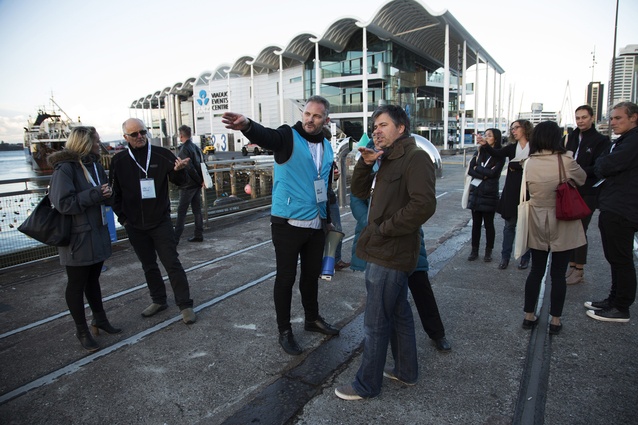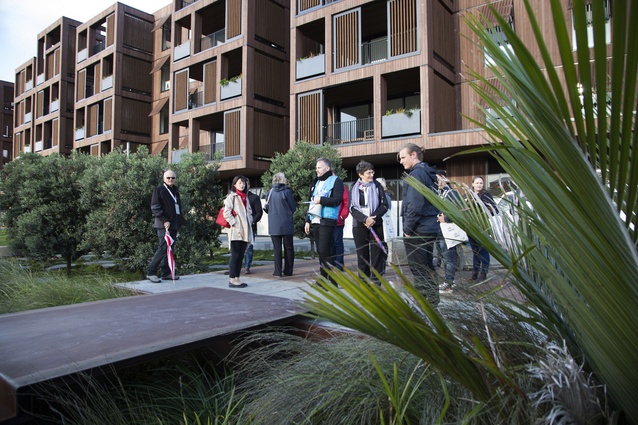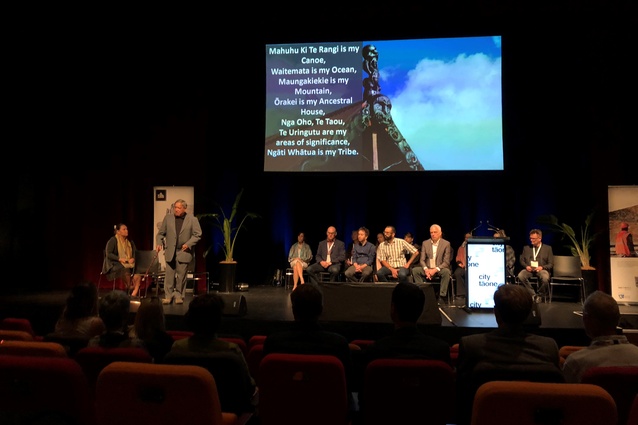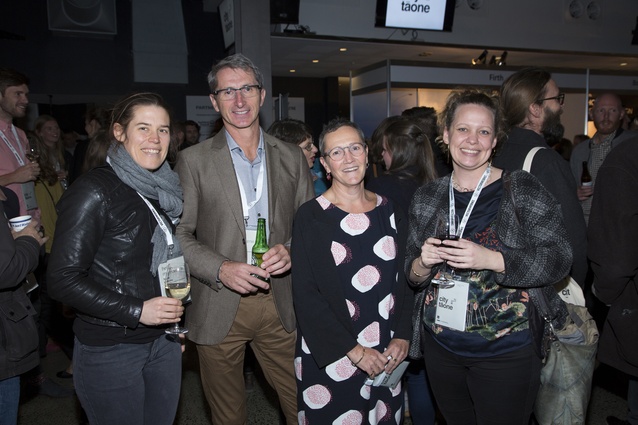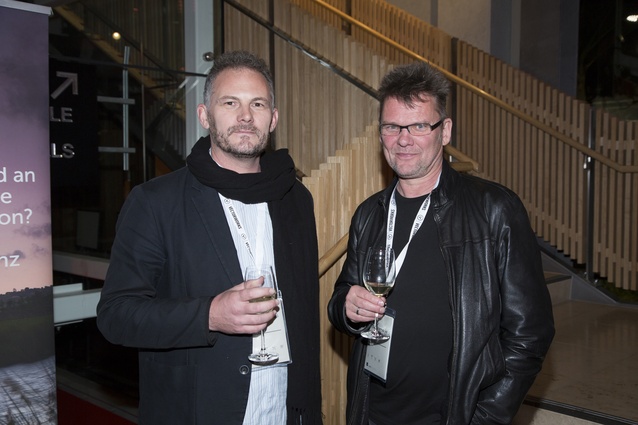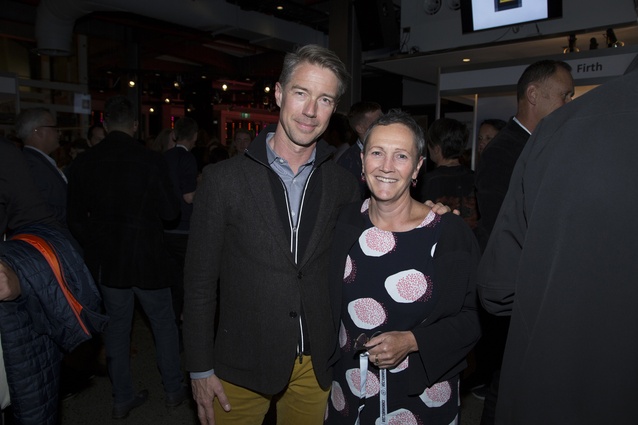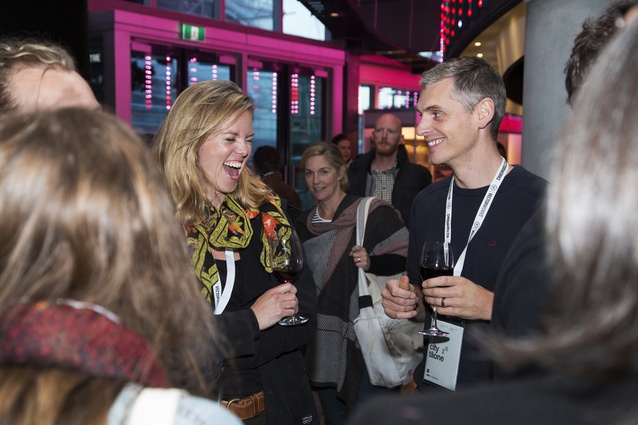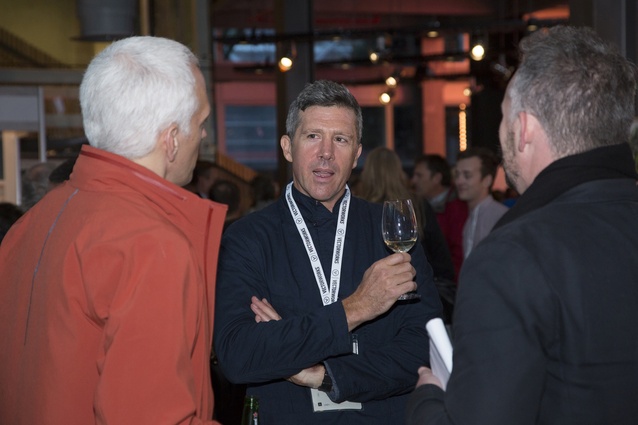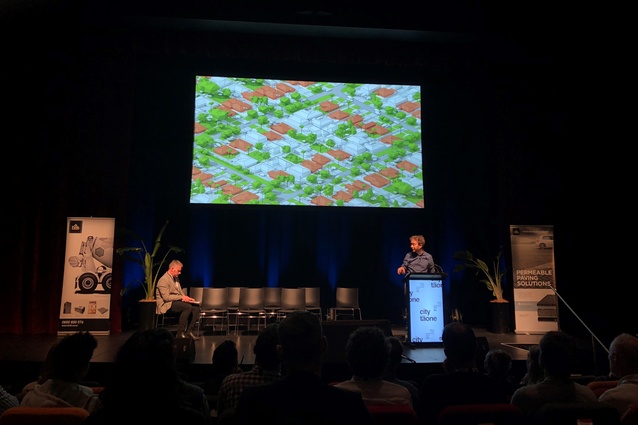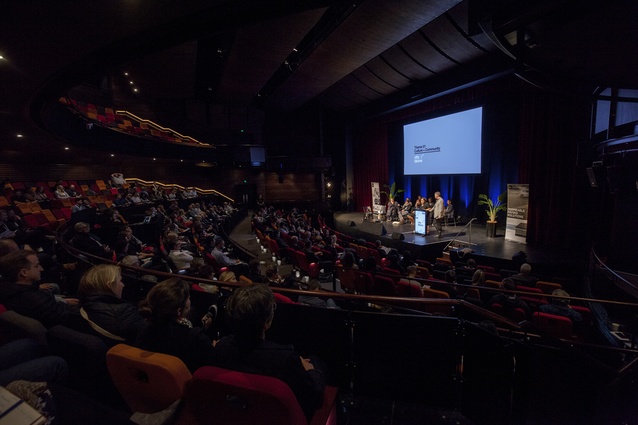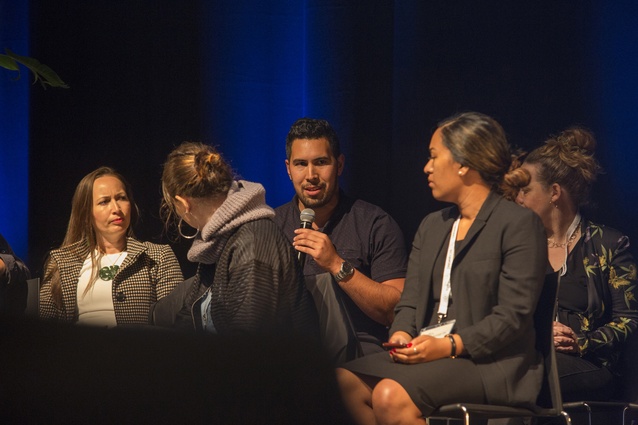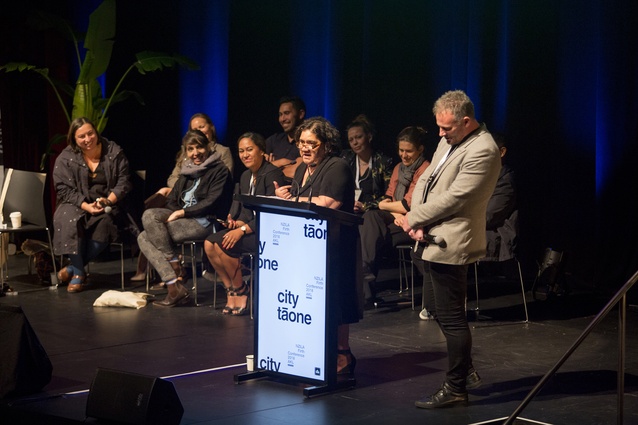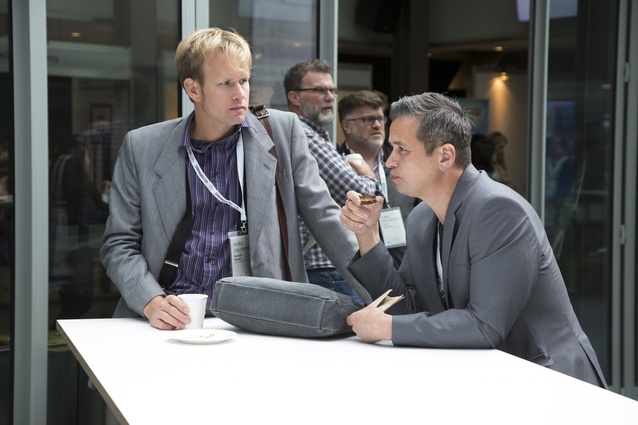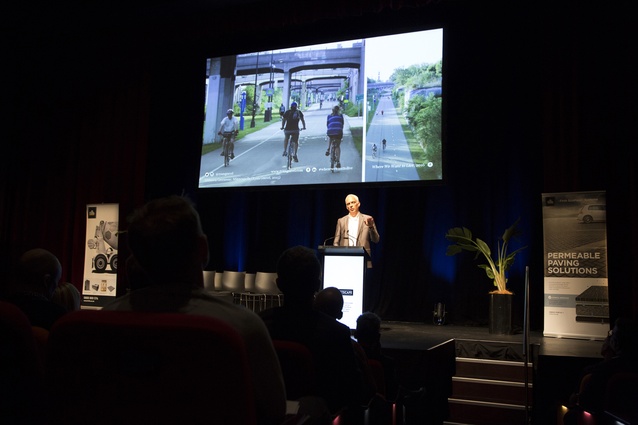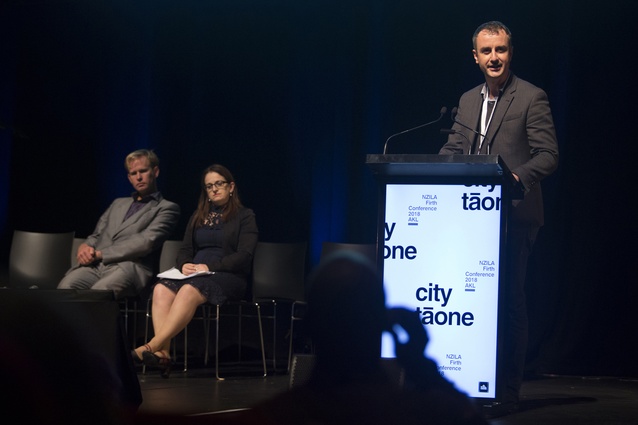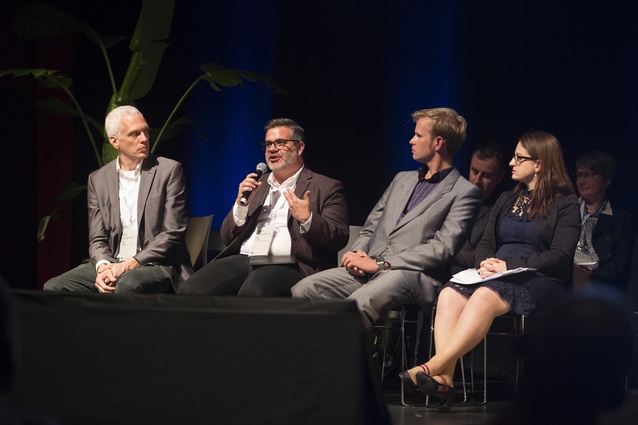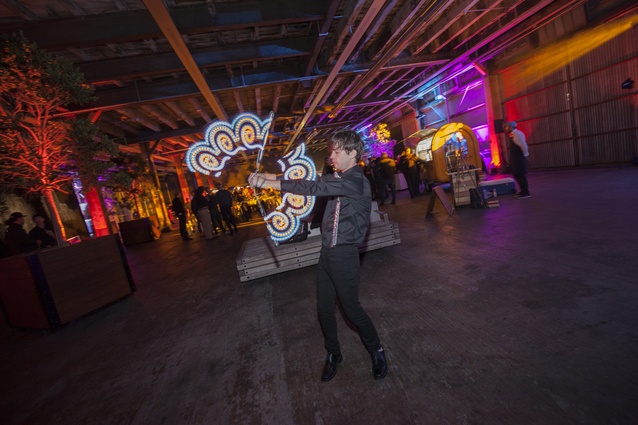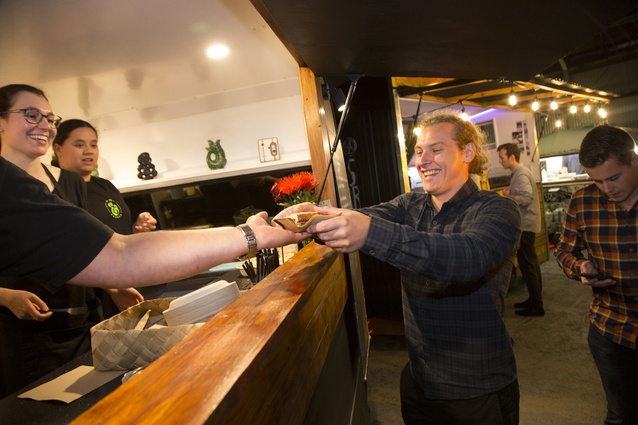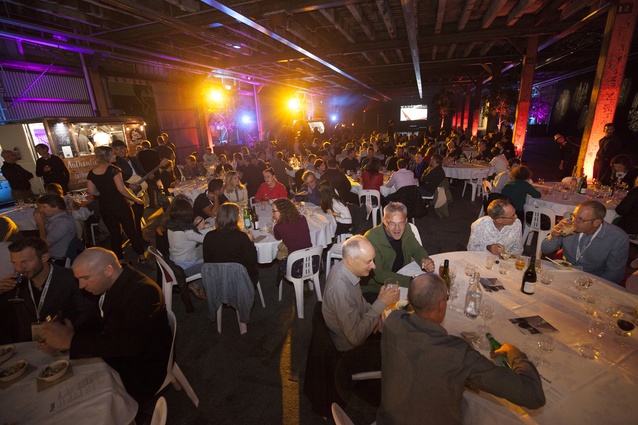City Tāone
Haley Hooper, urban designer and self-proclaimed “outsider on the inside”, shares her highlights from The New Zealand Institute of Landscape Architects Tuia Pito Ora Conference, held from 11 to 13 April 2018 at the ASB Waterfront Theatre in Auckland.
There I was, ‘semi-architect’, ‘almost urban-designer’, ‘sometimes writer’, masquerading as a ‘landscape architect’ at this conference. Who was to know which incognito alias I was? What was I doing there?
I was there because this was a forum that provided perspectives on the undeniable shortcomings, overwhelming potentialities and increasingly critical issues currently facing our cities. This was a landscape architecture conference with a very urban focus, hence the name City Tāone.
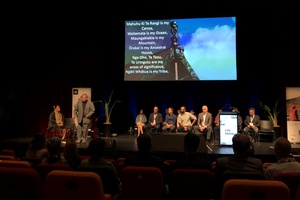
A diverse collection of speakers were well brought together by Henry Crothers and the committee under four themes: Culture and Community, Movement, Water and Ecologies, and Places and Spaces. The conference speakers recounted facts, theories, strategies, realities, whakapapa, stories, imagery, histories and personal commentary on key urban issues. Issues relating to the social, economic, cultural, pragmatic and environmental concerns we face in the debate and design of cities were at the forefront.
We were welcomed to the whare by mana whenua Matt Maihi, kaumātua of Ngāti Whātua, where he set the context of Tāmaki Makaurau (Auckland). It was the right place to start from; beginning with tangata whenua so, inherently starting with whenua (land) first.
From there, we progressed on to discuss the many ways in which we are inhabiting land, building on it and working for or against it. For me, the thread that was spun throughout the conference was the deep need for pluri-awareness in all urban development. An awareness that recognises the importance of environmental and socio-cultural motivations just as much as economic and political concerns.
The conference outlined the challenges associated with our growing urban populations and rapidly developing cities. It communicated a great need for designers to understand the implications of the current and future contexts we are working in and into. It told me that we must, as designers, be advocates and revolutionaries for urban thinking that grows cities that are responsive yet humane.
The Australian Urban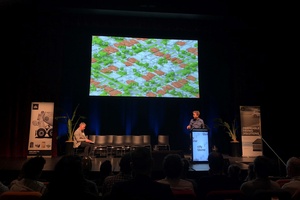
My pick of the bunch was the very first speaker – Dr Julian Bolleter of with his talk, “The future of Australasian cities and a role for landscape architecture.” Julian managed to pack in number of very succinct and hard-hitting arguments that demonstrated the immediacy of the problems facing Australasian cities.
He discussed population growth and the projected increases (New Zealand could go from the current 4.6 million to 7.5 million by 2060), and the problems we are having keeping pace with the infrastructure required to accommodate the city as it inflates. He questioned why there is no coordinated national plan for this growth in either Australia or New Zealand.
He highlighted how cities are fracturing along socio-economic lines, and the impacts of these inequalities in housing affordability, pushing people to the urban peripheries, and the difficulty in servicing the outer fringes. And, he framed his research in a manner that clearly stated the position of risk cities are in. It called for action in specific areas, suggested possible alternatives and ended with seeing our crisis as the pressing moment of incipient change and an opportunity that forcedly enables new models of city in order to cope.
Culture and Community
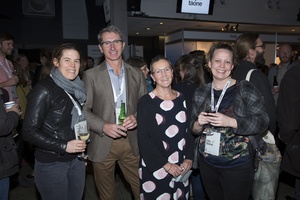
We also heard from Danish team Sofie Willems and Joan Raun Nielson of Spektrum Arkitekter. These two ladies epitomise the meaning of community through their work and inclusive design processes. They helped me to understand how generically we can use the word ‘community’ and how we can fail to really stop and take the time to ask, “Who is in this community?”
The theme of culture was carried on by Timmah Ball (Ballardong Noongar), Policy Advisor in Victoria, Australia and Rebecca Kiddle (Ngāti Porou Ngāpuhi) from Victoria University Wellington who spoke of displacement and decolonisation of the city, and how this works (or doesn’t work) from theory to practice. They cautioned us on the new ‘sexy-brown’, or how people are using culture to create identities, and they invoked a discussion about how we should look to articulate Māori values in urban contexts and understand cities as indigenous places.
Timmah and Rebecca were followed by a group of young, visionary indigenous designers: Rameka Alexander Tu’inukuafe, Māori Design Leader at Jasmax; Jacqueline Paul, a graduate landscape architect; Alayna Renata of Mode Design; and Joel Umali of Makerhood. They emphasised the meaning of “tikanga,” doing things the ‘right way’. They spoke of te reo, co-design and social entrepreneurship to develop participatory problem solving and to grow makers.
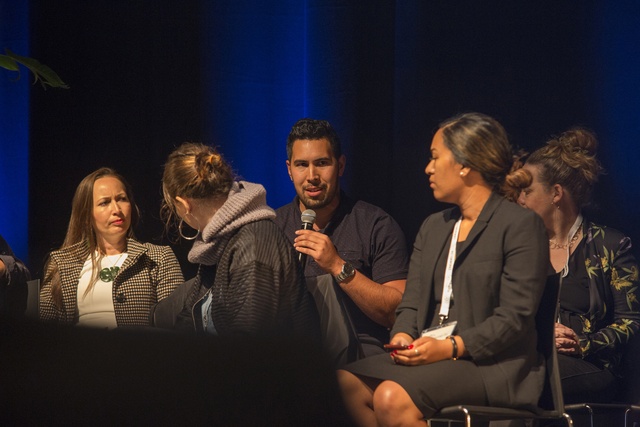
Movement
Through Toby Lodge of Hassell, Evan Williams of Jasmax and Sacha Coles of Aspect Studios we heard the potential for infrastructural projects, like the Melbourne Metro, the Auckland City Rail Link and Sydney Light Rail, to not only provide our cities with more efficient public transport and better connectivity but also the opportunity to provide bespoke, local identities that create urban distinctiveness. Evan spoke of the collaborative process of stakeholders working alongside mana whenua to include whakapapa and stories that are specifically of place.
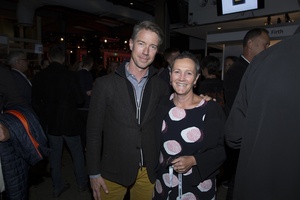
Thomas Woltz from Nelson Byrd Woltz Landscape Architects was as eloquent, pragmatic and poetic as always. He talked through the 100-year master plan for Cornwall Park that has been conceived in collaboration with Rachel de Lambert and Boffa Miskell, a Brooklyn Naval Yard Cemetery come ‘wildflower and pollinator meadow’ and the Centennial Park in Nashville. All three projects demonstrated a strong desire to create something contemporary yet lasting and authentic.
Turf Design Studio’s Mike Horne accentuated the need to develop urban resilience and green infrastructure and to repurpose our cities in response to the global ecological crises we are now facing. He used Central Park in Sydney as an example to illustrate the types of design and technologies that can be used to create not only sustainable buildings but sustainable mixed-use precincts that manage their own energy and water cycles.
Water and Ecology
Sean Burke of Isthmus probed the audience, asking, do we as landscape architects really understand ecology? He spoke of the importance of “edges” here in New Zealand and the Pacific, and how the coast is of paramount importance to our understandings of city and place.
We also heard from Gillian Cowcroft, a planner at Harrison Grierson, and Mike Chapman a civil/stormwater engineer. They spoke of the necessity of recognising the natural hydrology of eco-systems in our water management systems. Mike outlined a timeline of cities and water from the days of a water supply city to a drained city (perhaps where Auckland still sits) to ultimately, where we want to end up: with a “water sensitive city.” He concluded with a very simple piece of advice, “Manage rain where it falls.”
Places and Spaces
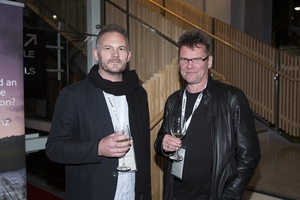
Bart Brands from Karres + Brands told us that the “world needs gardeners!” He also advocated the need for constant evolution due to the everchanging nature of cities. The idea of co-ownership was raised and the concept of building something together. In his eyes, all the active shifts in society are stronger than any masterplan, so he encourages us to “involve” ourselves with them.
Kaare Krokene of Snøhetta was a sparkling speaker exploding with ideas and full of comic script like, “If you can’t wee it in the snow, it’s too bloody complicated.” Snøhetta presented nothing less than expected: a parade of beautiful images and projects and a loving, dedicated but rational and playful recollection of the design process.
From the Norwegian Opera and Ballet House – which manages to be both angular and strong, yet romantic and poetic in its form, with publically occupiable “democratic” roof spaces – to the wild reindeer pavilion in Hjerkinn that looks out over the company’s namesake mountain, it becomes immediately obvious why they are so successful in architecture and design. They manage to develop contextually driven buildings, whilst equally creating bold and charismatic experiences of space and form. A lesson in the beauty of paradox.
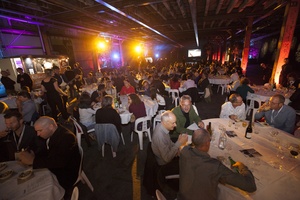
At the conference, I was inspired by listening to the way in which landscape architects are working and what their discussions focus on. This discipline is tackling the “city” in ways many of us are possibly unaware of. The prominence of landscape architects is quietly but quickly rising along with the importance of the contribution of the public realm.
As we discover what it is we call a “Pacific city,” it is these salt-of-the-earth designers in collaboration with mana whenua that are, in many ways, the ones who are creating the distinct and tangible Aotearoa identities; the places and spaces we now think of as urban and Kiwi.
As you may note, I’m sold. So, if you find yourself with an inkling or an opportunity to waltz/Woltz over (as architects do) and attend the next New Zealand Institute of Landscape Architects Tuia Pito Ora conference incognito, I shan’t say you will be disappointed.
To finish, in Matt Maihi’s words; “Lands in Aotearoa will be a place to be desired by all, as it is today.” It is always our privilege to live here. It is always our responsibility how we live here.
Click here to see all the full-length talks from the conference.

